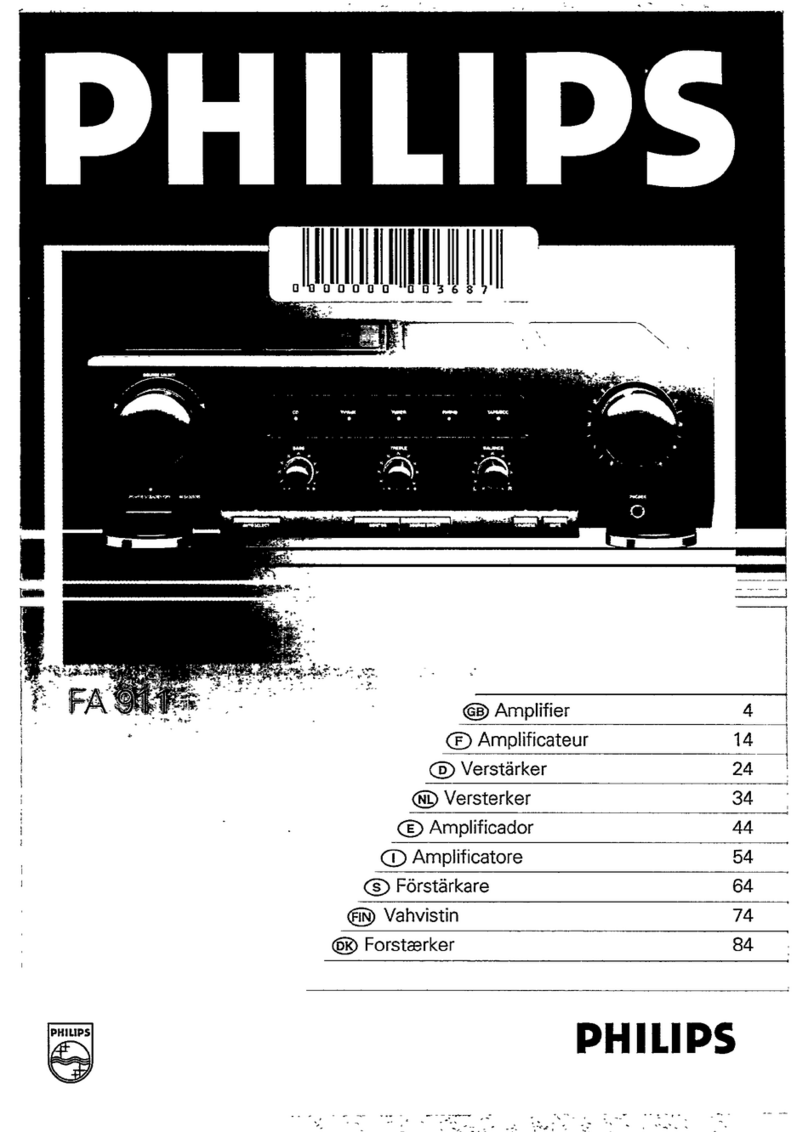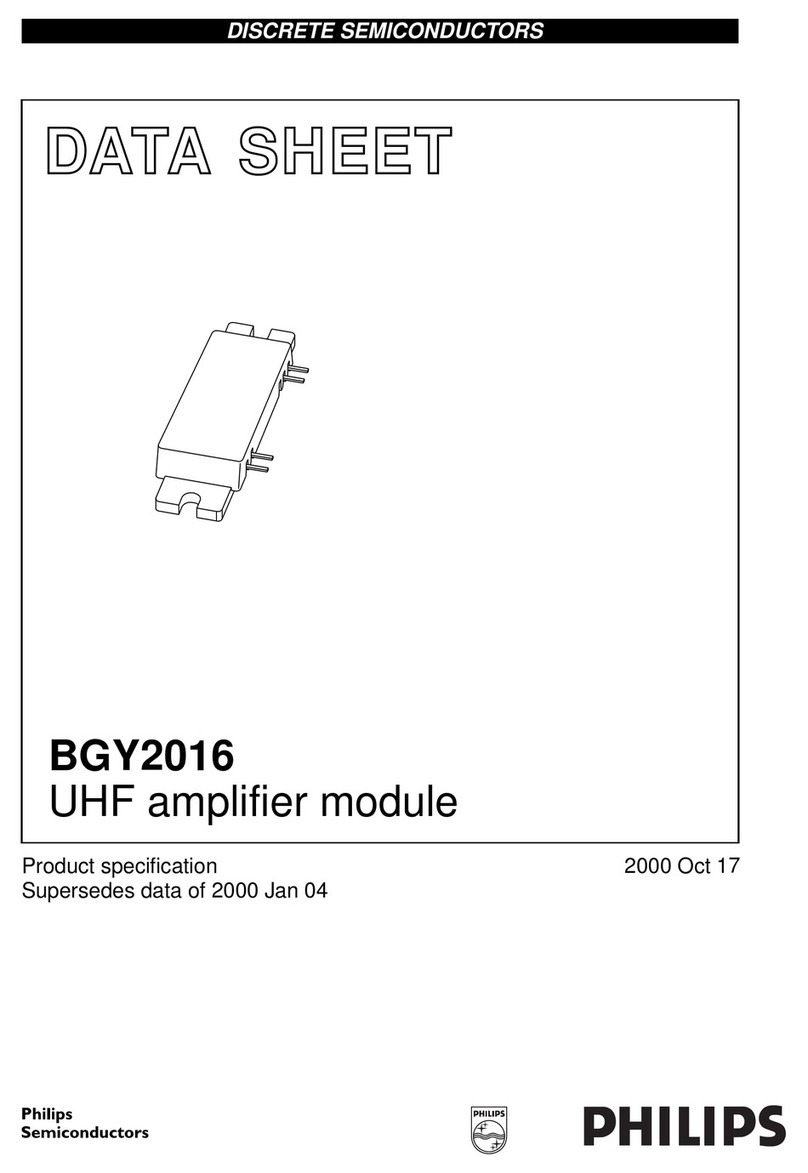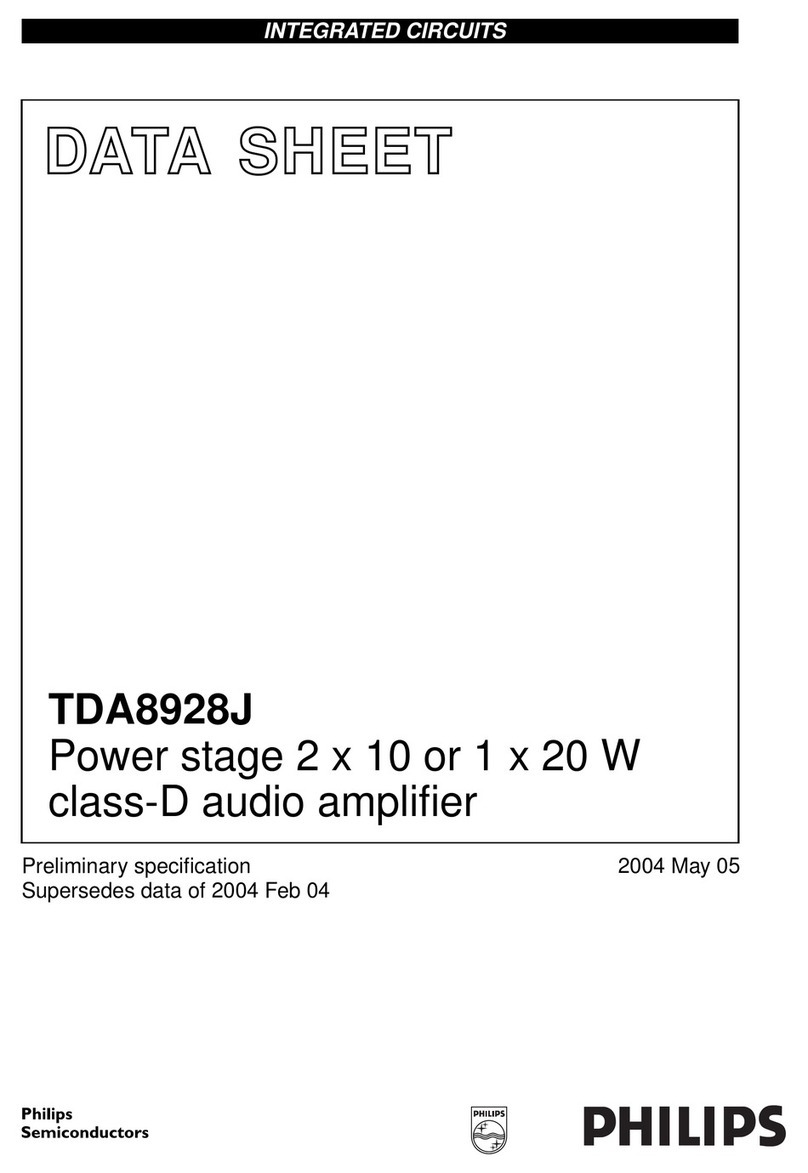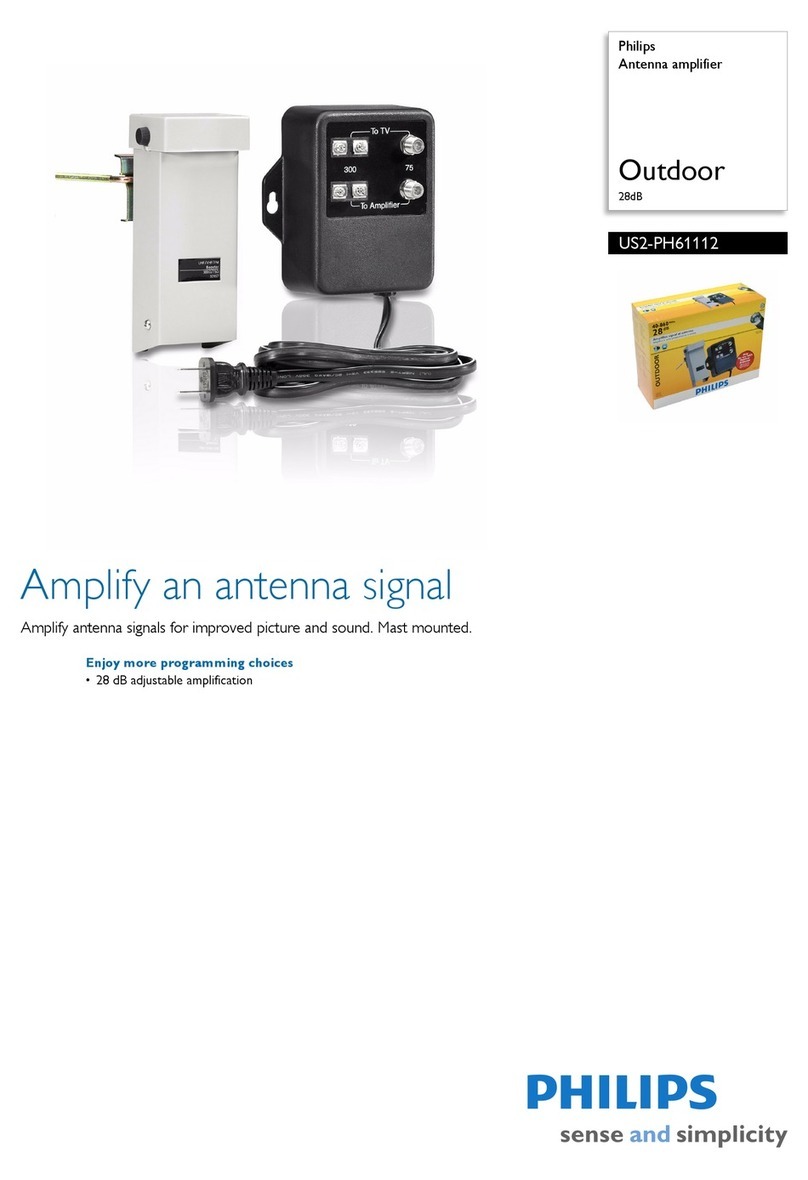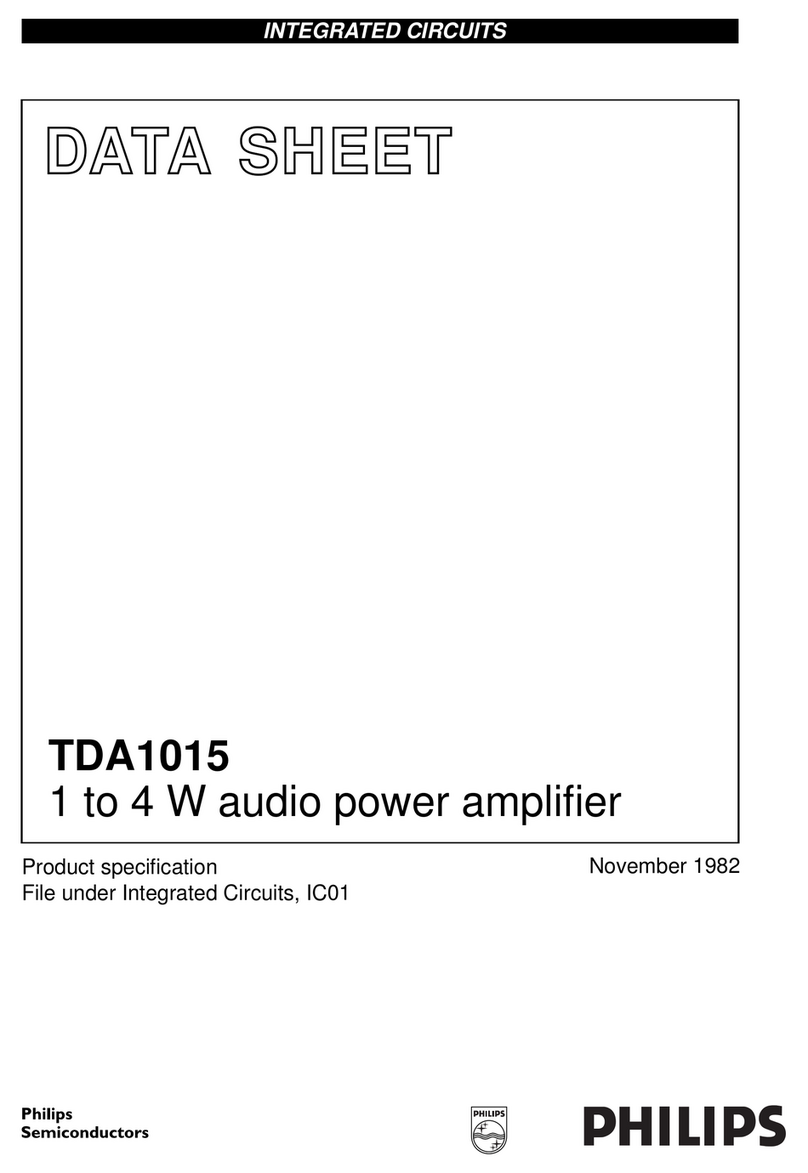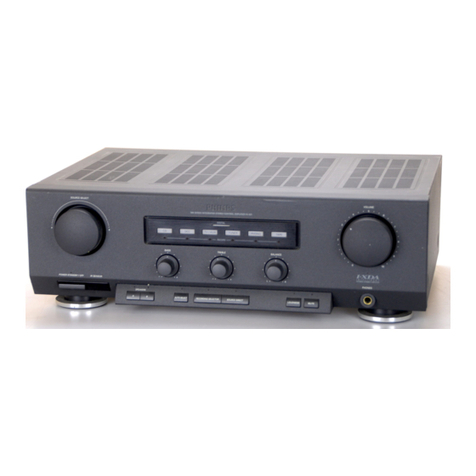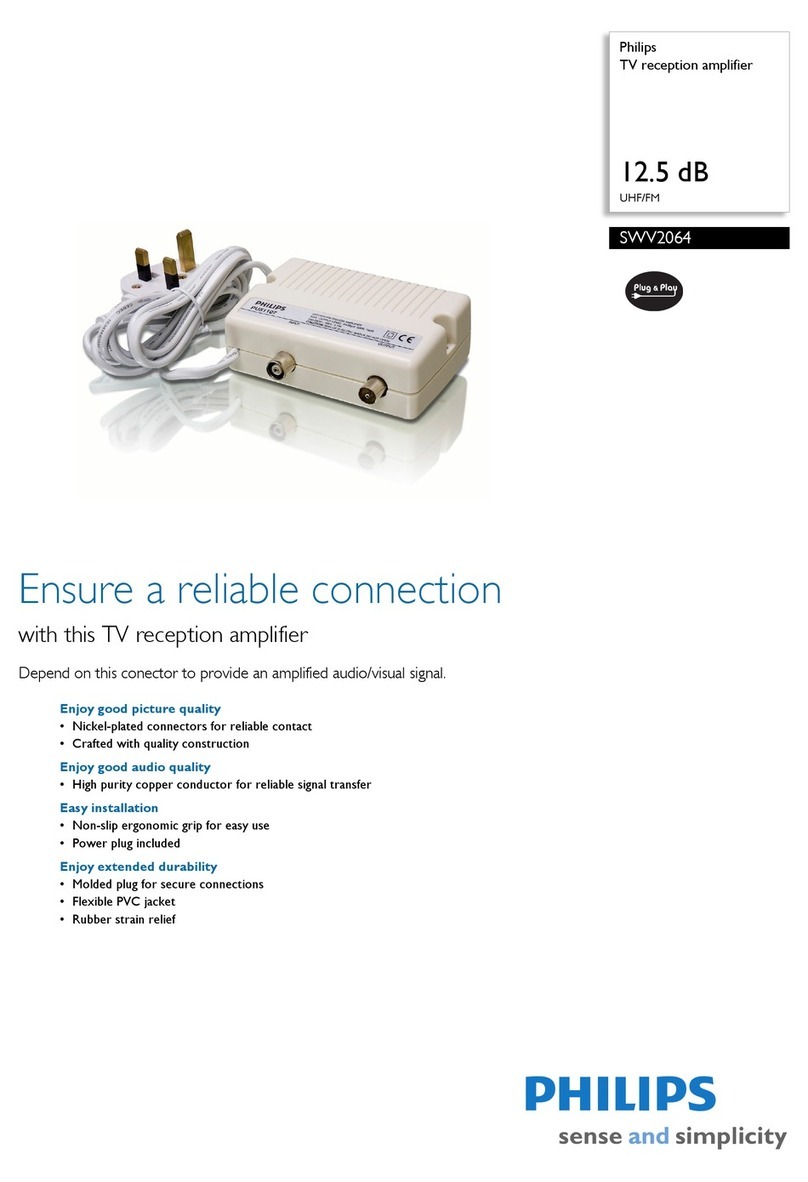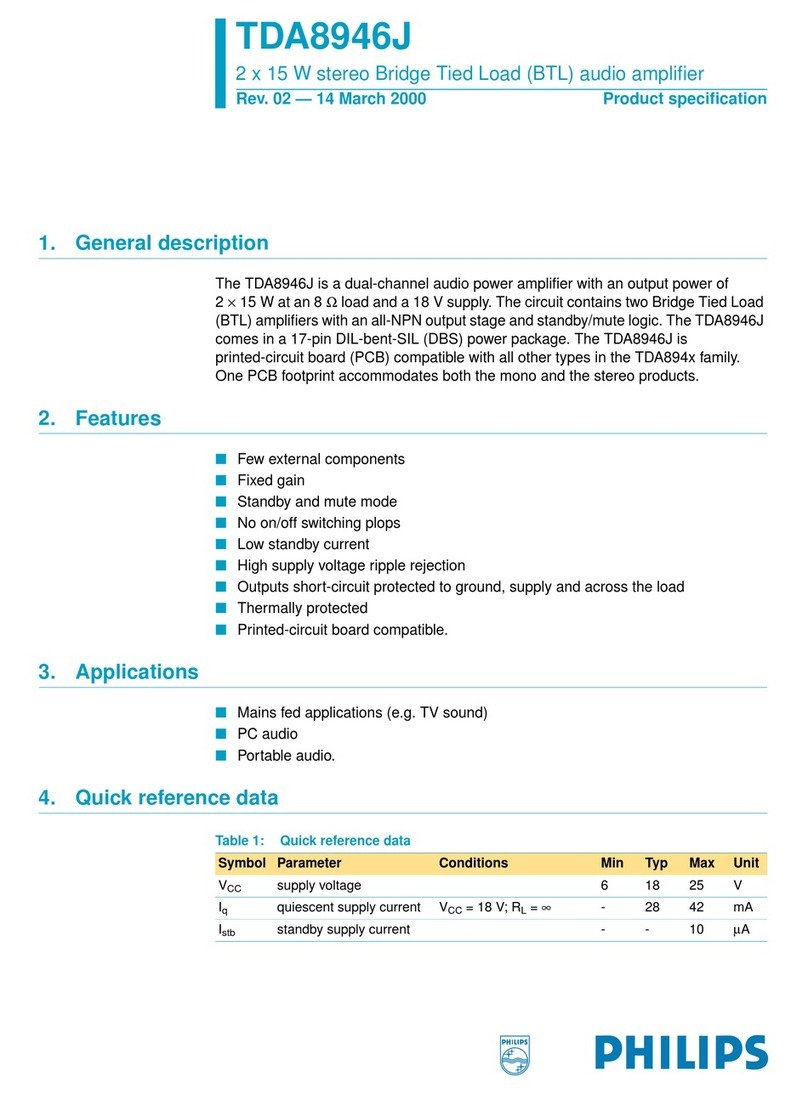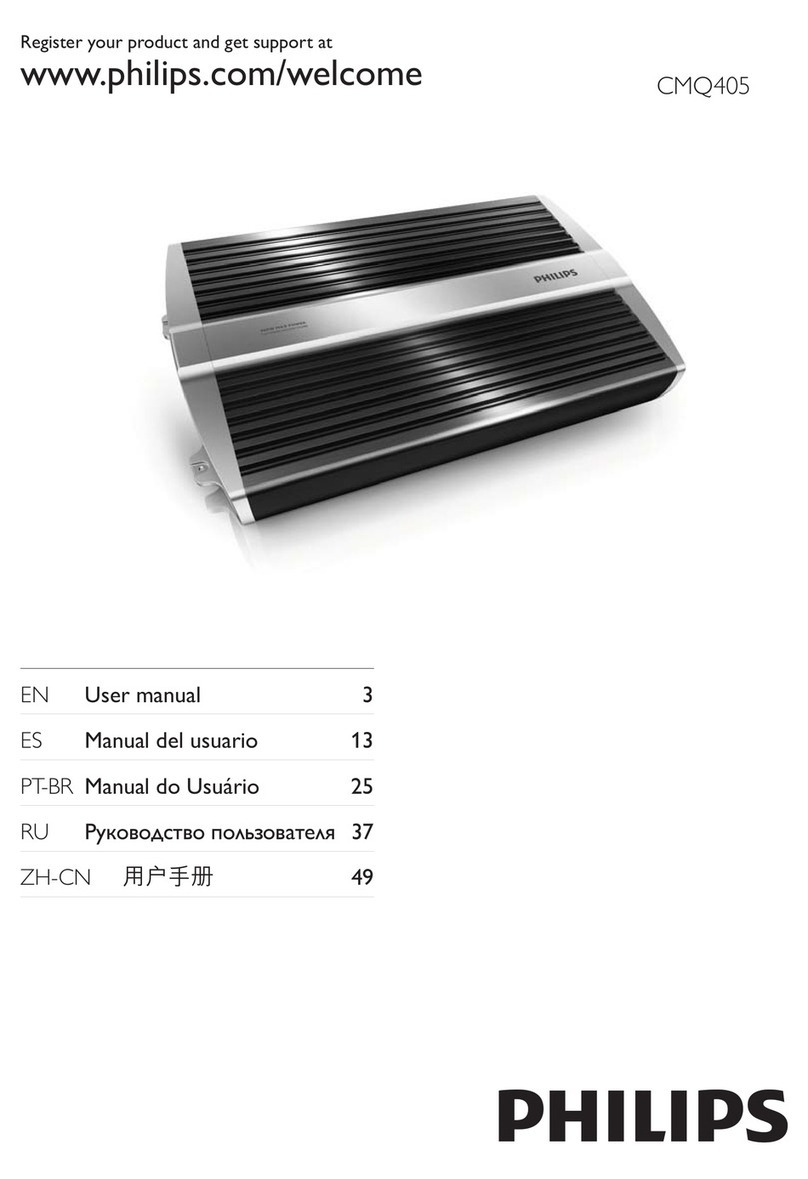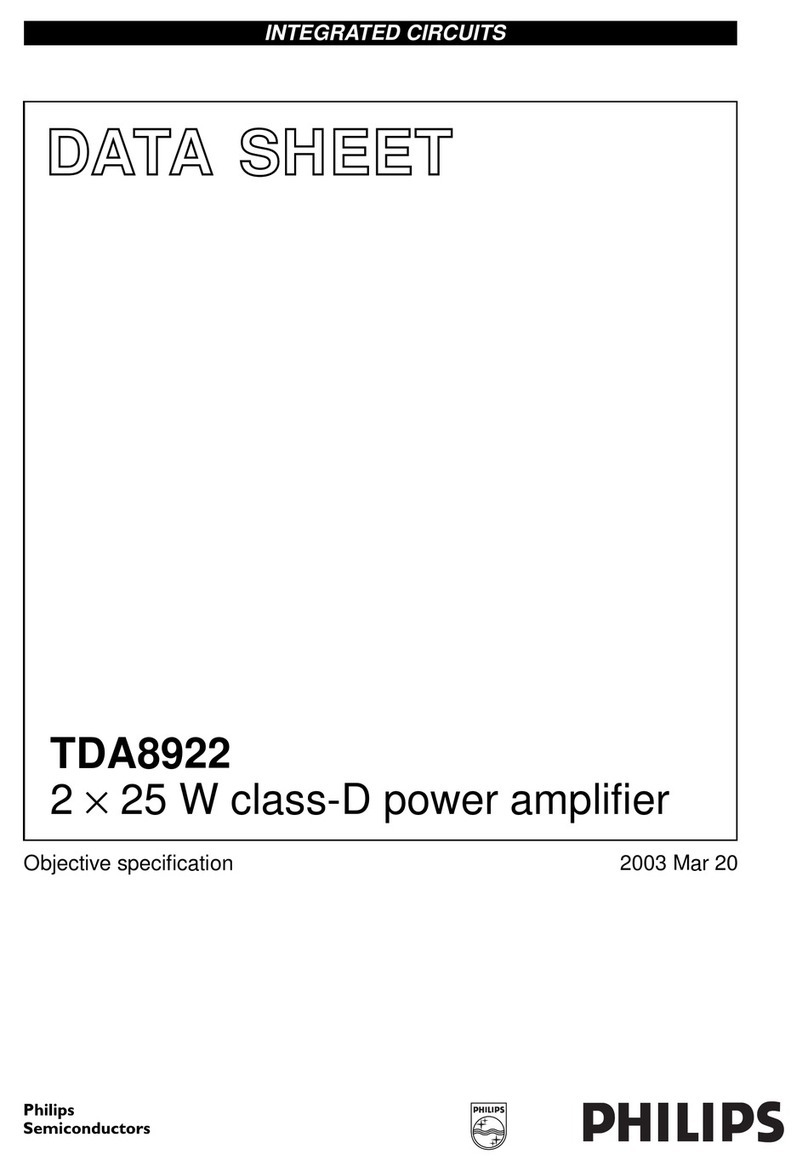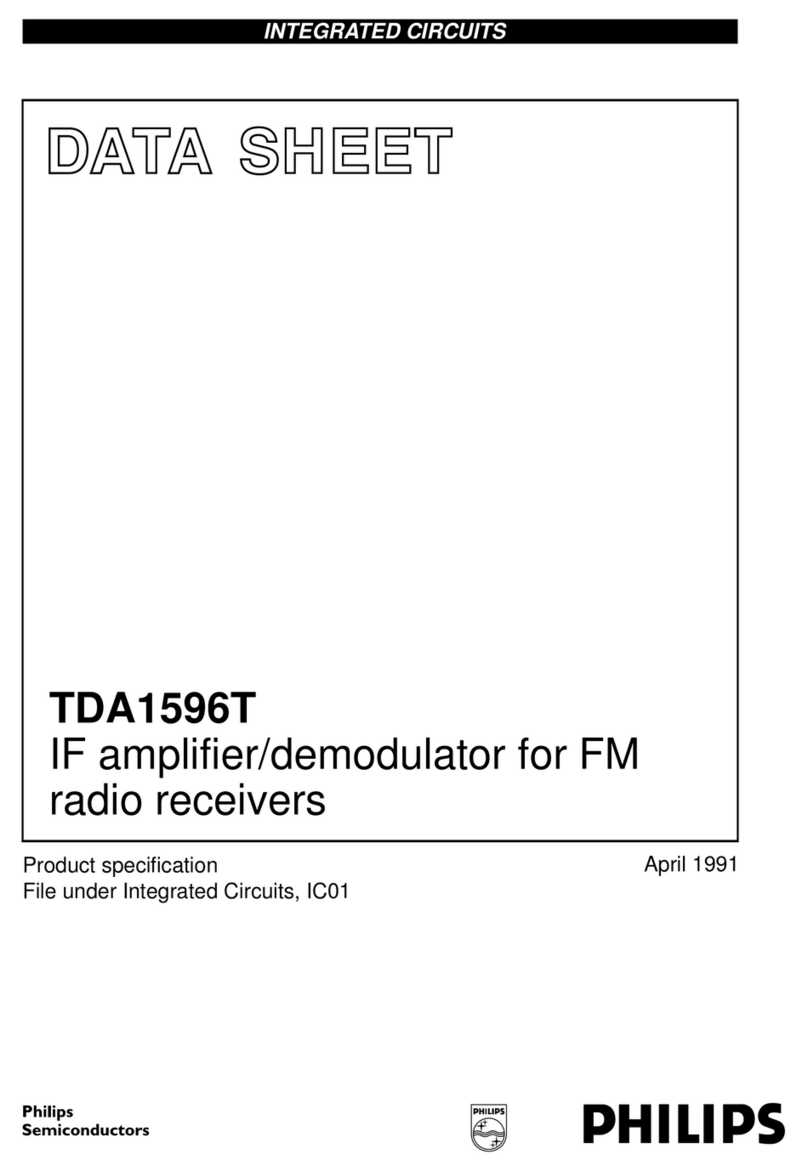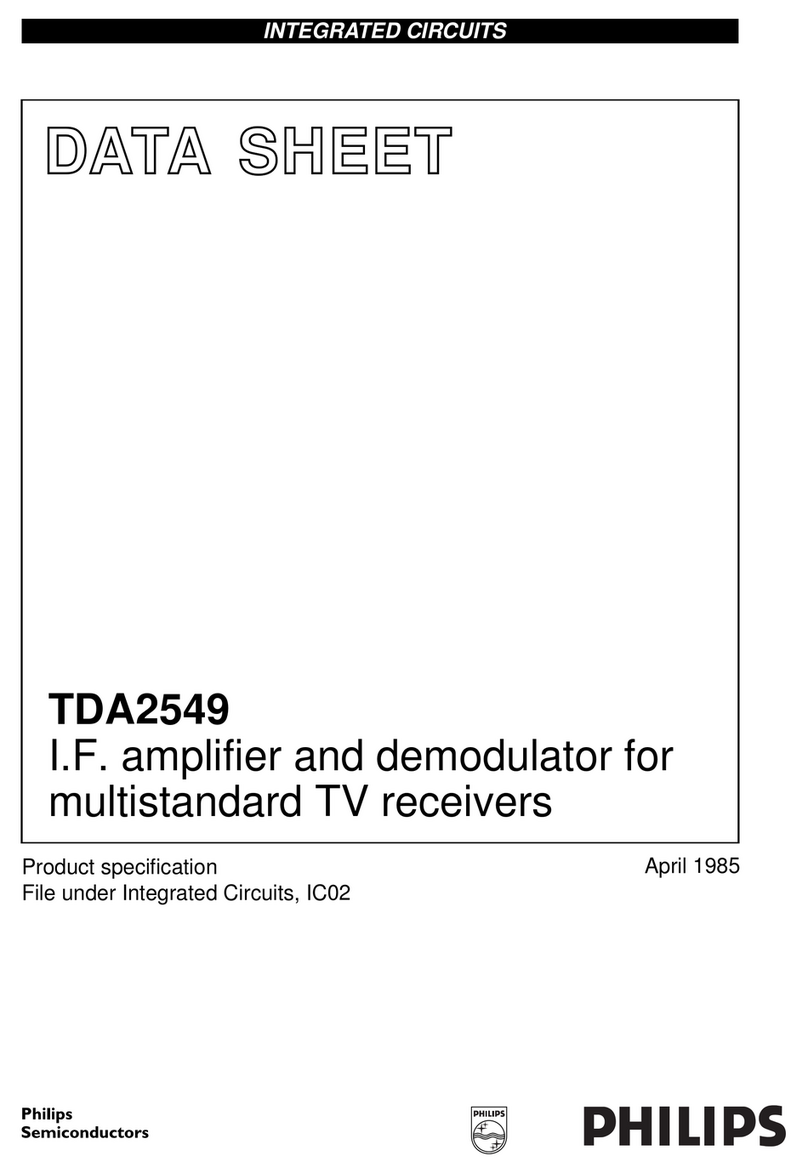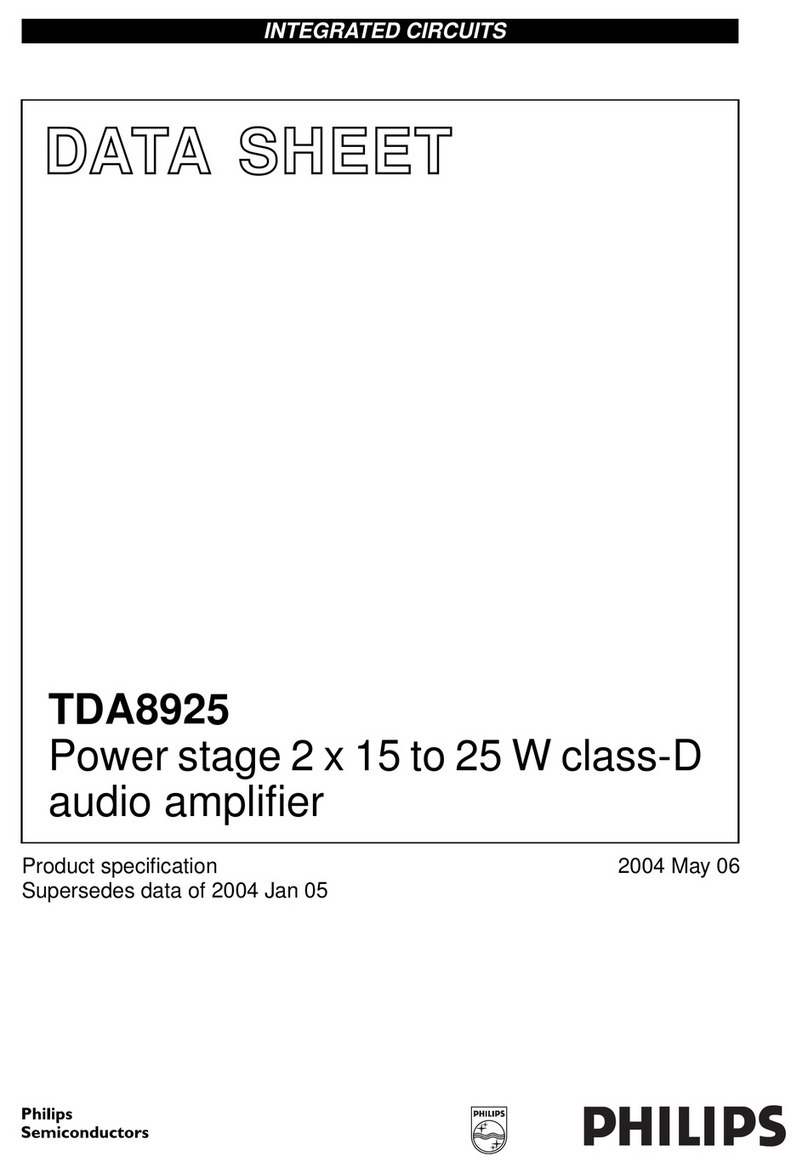
1998 Nov 18 8
Philips Semiconductors Product specification
FM/IF amplifier/demodulator circuit TDA1576T
OPERATING CHARACTERISTICS
VP= 8.5 V; fIF = 10.7 MHz; RS=60Ω; fm= 400 Hz with ∆f=±22.5 kHz; 50 µs de-emphasis (C8-9 = 6.8 nF);
Tamb =25°C and measurements taken in Fig.1; unless otherwise specified. The demodulator circuit is adjusted at
minimum second harmonic distortion with ViIF = 1 mV.
Standby switch; see Fig.9
V5input voltage for FM on ;
V19 = 0.3 V
2.4 2.5 −V
input voltage for FM off −2.9 3 V
linear range −350 −mV
I5input current V5=0to2V −−−100 µA
V5= 3.5 to 15 V −−1µA
temperature dependence FM on (3.5VBE)−7−mV/K
FM off (5VBE)−10 −mV/K
Supply voltage smoothing
V1-2 internal voltage drop proportional to
V1−3VBE
80 210 400 mV
R1-2 internal resistor 5.8 8.3 10.8 kΩ
SYMBOL PARAMETER CONDITIONS MIN. TYP. MAX. UNIT
IF amplifier and demodulator
ViIF(rms) input sensitivity (RMS value) −3 dB before limiting 14 22 35 µV
S/N = 26 dB −10 −µV
S/N = 46 dB −55 −µV
V
oAF(rms) AF output voltage (RMS value) 60 67 75 mV
VoN noise voltage for ViIF = 0 (RMS value;
pins 8 and 9) RS= 300 Ω;
f = 250 to 15000 Hz −900 −µV
weighted noise voltage in accordance with
“DIN 45405”
−2−mV
S/N signal-to-noise ratio (pins 8 and 9) ViIF = 1 mV (RMS);
see Fig.3 −72 −dB
αAM AM suppression ViIF = 0.5 to 200 mV;
FM: 70 Hz; ±15 kHz;
AM: 1 kHz; m = 30%
−50 −dB
αFM FM suppression for FM off ViIF = 500 mV; V5=3V 80 −−dB
∆V8, 9 AFC shift in relation to minimum second
harmonic distortion α2H
ViIF = 0.03 to 500 mV −25 −mV
DC offset at second harmonic distortion operating −0±100 mV
mute or FM off −0±50 mV
α3H distortion for third harmonic −0.65 −%
RR ripple rejection Vripple = 200 mV on VPf = 100 Hz 43 48 −dB
SYMBOL PARAMETER CONDITIONS MIN. TYP. MAX. UNIT
V3, 7
V3, 7(max)
----------------------- 0.9=
V5
T∆
-------
